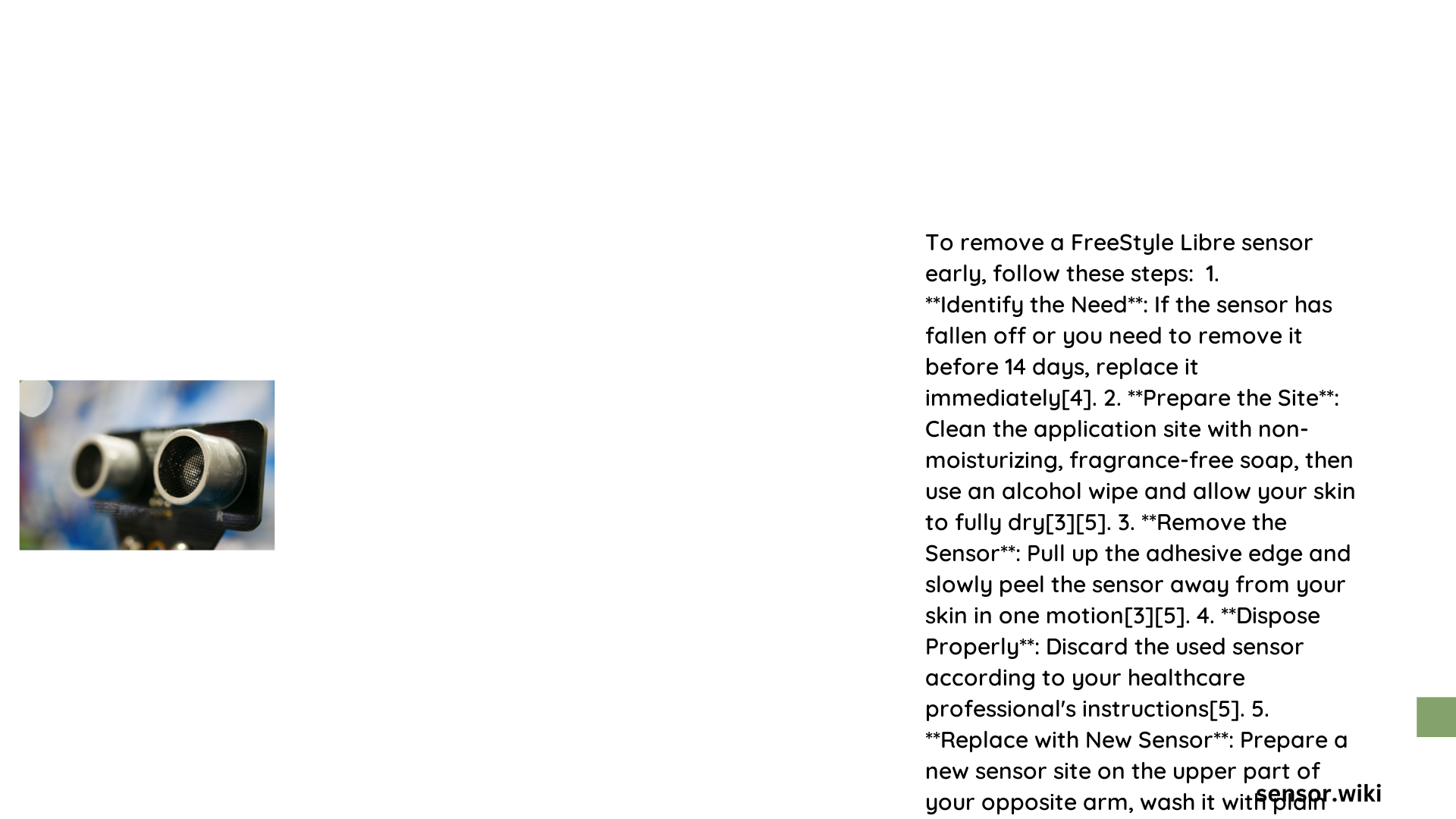Removing a Freestyle Libre sensor early requires careful consideration and specific techniques to ensure minimal skin irritation and maintain accurate glucose monitoring. Patients may need to remove their sensor prematurely due to various reasons such as skin discomfort, sensor malfunction, or unexpected adhesive issues. Understanding the correct removal process can help prevent potential complications and ensure continuous diabetes management.
Why Would You Need to Remove Freestyle Libre Sensor Early?
Patients might consider early sensor removal for several critical reasons:
- Skin Irritation Symptoms
- Persistent redness
- Itching or burning sensation
- Allergic reaction to adhesive
-
Unexpected skin inflammation
-
Sensor Performance Issues
- Inaccurate glucose readings
- Connectivity problems
- Physical damage to sensor
- Unexpected calibration errors
What Are the Recommended Steps for Safe Removal?

Preparation for Sensor Removal
| Step | Action | Purpose |
|---|---|---|
| 1 | Gather Removal Materials | Adhesive remover, soft cloth, gentle oil |
| 2 | Clean Hands | Prevent potential infection |
| 3 | Identify Removal Area | Locate sensor edges carefully |
Detailed Removal Process
- Loosen Adhesive Gently
- Apply adhesive remover or baby oil
- Wait 30-60 seconds for softening
-
Use minimal pressure during removal
-
Peeling Technique
- Pull skin taut
- Remove sensor at 45-degree angle
- Move slowly to minimize discomfort
How Can You Minimize Skin Damage?
Post-Removal Skin Care
- Clean removal site with mild soap
- Pat dry thoroughly
- Allow 24-48 hours before reapplying new sensor
- Use hypoallergenic moisturizer if needed
What Are Potential Consequences of Early Removal?
Impact on Glucose Monitoring
- Temporary Data Interruption
- Potential gaps in continuous monitoring
- Might require manual blood glucose tracking
- No long-term performance impact if removed correctly
Cost Considerations
- Premature removal may increase overall sensor expenses
- Insurance might not cover unnecessary replacements
- Recommended to follow manufacturer guidelines
Expert Tips for Smooth Sensor Management
- Rotation Strategy
- Change sensor application sites regularly
- Avoid repeated use of same skin area
-
Monitor skin condition between applications
-
Adhesive Sensitivity
- Consider hypoallergenic patches
- Perform patch tests before full application
- Consult healthcare provider for persistent issues
When Should You Seek Professional Advice?
Red Flags Requiring Medical Consultation
- Persistent skin rash
- Severe allergic reactions
- Continuous sensor malfunction
- Unexplained glucose reading discrepancies
Technical Recommendations
Sensor Handling Best Practices
- Store sensors at recommended temperature
- Check expiration dates
- Handle with clean, dry hands
- Avoid extreme environmental conditions
Final Recommendations
Removing a Freestyle Libre sensor early should be a calculated decision based on medical necessity and personal comfort. Always prioritize skin health and accurate glucose monitoring while following manufacturer guidelines.
Key Takeaways
- Remove sensor carefully and gently
- Monitor skin condition
- Consult healthcare professionals for persistent issues
- Maintain proper diabetes management strategy
Reference:
– FreeStyle Libre Official Website
– American Diabetes Association Guidelines
– National Institute of Diabetes Resources
